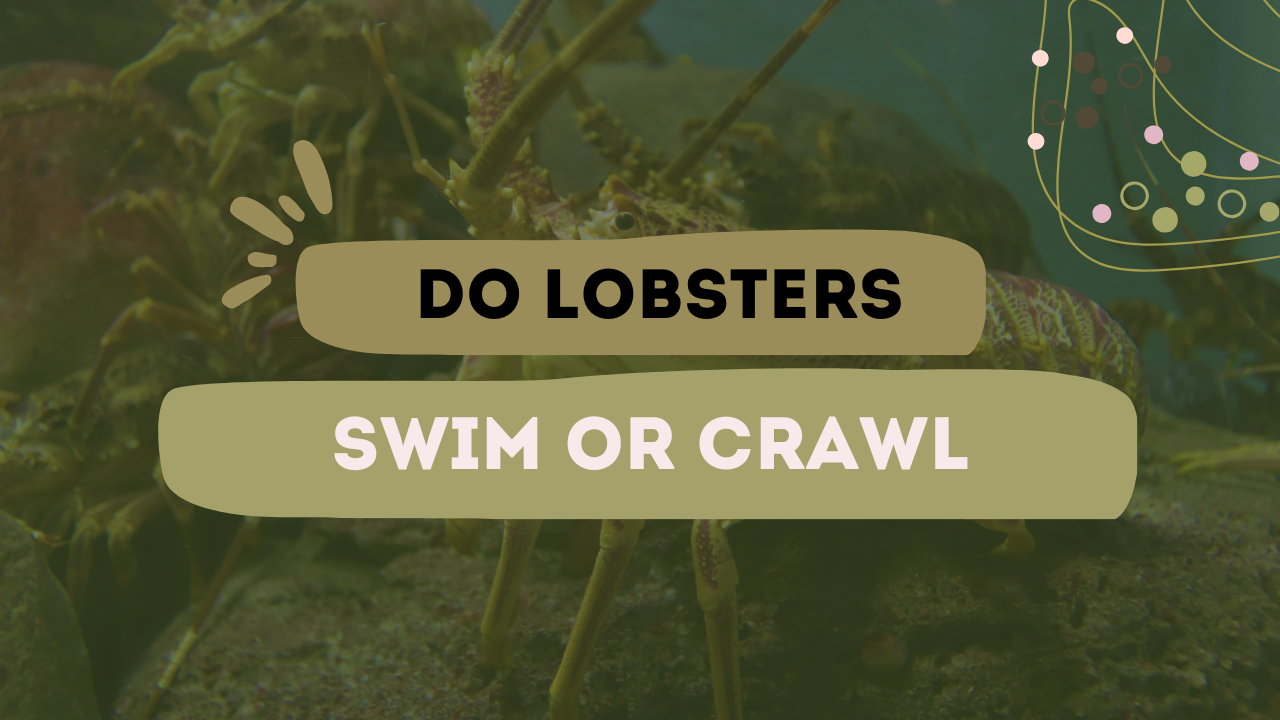Alright, so it’s likely that you’ve seen a lobster on a dinner plate or even in a tank at the supermarket (sad men). However, have you ever wondered if lobsters crawl or swim? Really, how do they manage to navigate the deep sea down there? Do they swim like fish and flap their amusing-looking tails, or do they scurry around on the ocean floor? You might be surprised to learn how fascinating it is! Additionally, you’re in the perfect spot if, like me, you’re curious and have a habit of asking strange questions at two in the morning. Let’s explore the world of lobsters, which are salty and shelly, and discover for sure how these marine animals move.
Table of Contents
So… Do Lobsters Swim or Crawl?
Okay, let’s get right to the point. Although they are mostly crawlers, lobsters can also swim, though not in the manner you might think.
It’s likely that when you imagine swimming, you see something elegant, such as a fish darting among coral or a dolphin gliding through the surf. Lobsters? Not quite so classy. They mostly crawl across the sea floor using their legs. The first of its five pairs of legs features those recognizable enormous claws, which, incidentally, appear quite frightening up close. They can scurry around looking for food or a nice hiding place thanks to the extra legs.
The twist is that lobsters use their strong tails to propel themselves backward in a technique known as the “tail-flip” when they need to quickly flee danger. They only move in this jerky, extremely quick manner when they are scared or attempting to escape from predators. They are capable of swimming, but not always or with much grace.
Crawling is the Main Mode of Transportation
Let’s get right to the point: lobsters live on the bottom. They scavenge for food such as algae, tiny fish, sea snails, and whatever else they can find while hiding in rocky crevices and moving around the ocean floor. Their preferred method of moving from point A to point B is crawling.
Their legs are made specifically for this type of motion. They have setae, which are small hairs on their legs that let them sense their environment, and each section of their exoskeleton aids in locomotion. Basically, they’re moving with a goal, even though they’re not running.
So Why Do People Think Lobsters Swim?
Well asked! It could be due to the way they move in water tanks or when they are frightened. Lobsters frequently move backward and flick their tails in similar circumstances, giving the impression that they are swimming.
Additionally, because, let’s face it, it looks more dramatic than them simply crawling around, lobsters are frequently shown performing the tail-flip dance in documentaries and nature shows. However, such clips don’t accurately depict their daily activities.
As an emergency escape technique, they actually only use their tail-flipping swimming maneuver when absolutely necessary. What if your only way to run was to jump like a spring backward? That’s how lobsters roll, or flip, as it were.
Interesting Fact: Lobsters Swim Backwards!
This is a strange fact that you most likely were unaware of: lobsters swim backwards. That’s right, no fancy forward motions. They move in reverse, away from whatever frightened them, thanks to the tail-flip maneuver.
Why go backward? The rapid contraction propels the extremely powerful tail muscles through the water in the opposite direction. In fact, it’s among the aquatic world’s quickest escape routes. Despite their ungainly appearance, lobsters have very powerful tails.
Can Baby Lobsters Swim?
Well, here’s a fun little twist: larvae, or baby lobsters, can swim freely! When they first hatch, they use little appendages to swim while floating around in open water. For a while, they are a part of the plankton world.
However, they settle down on the ocean floor and begin living the good ol’ crawling life like their adult lobster cousins after they grow and molt a few times. It’s similar to how tadpoles swim before developing into hopping frogs. Nature is untamed.
Quick Recap
- Do lobsters crawl or swim? Although they can swim—backwards and only when necessary—they primarily crawl.
- Main movement: Using their legs to crawl down the ocean floor.
- Swimming? In an emergency, a quick tail-flip propels them backward.
- Young lobsters? They swim at first, then calm down and begin to crawl.
Final Thoughts
That’s it! It turns out that lobsters are far more fascinating than they appear. They may not be the sea’s Michael Phelps, but they certainly know how to get away quickly when necessary. However, they spend the most of their time simply moving about, taking care of themselves, searching for food or a secure hiding place.
And you can confidently respond, “Both—but mostly crawl,” the next time someone asks you if lobsters swim or crawl, and then surprise them with some additional lobster facts. You’ll sound like an aquatic genius, I promise.

